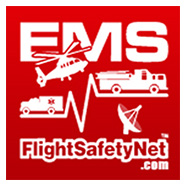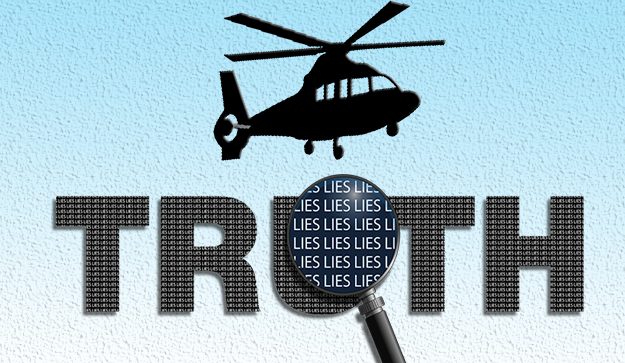I love magic.
Or at least…
I loved it when I was kid.
Creating illusions, pulling rabbits out of hats and making skyscrapers disappear in front of thousands of observers, fascinated me.
Right up until…
I figured it out.
Once I learned the “secrets” to magic, it wasn’t exciting to me at all. In fact, it quickly bored me.
What’s the point?
You Must Decide Now
The point is to decide right now if you really want to know the truth about EMS helicopters and air medical.
Knowing will change your perspective forever.
It’s not necessarily a bad change. But your perspective will definitely change.
Sometimes, like an aviation manager in an emergency room, it’s better to just feel the excitement and energy of the moment, than to try and understand what’s really happening.
You have to decide what’s best for you.
If You’re Still Reading, Good On You
Reality is the only way EMS and air medical (or anything else) gets better, is by starting from a benchmark of how it really works.
The irony is every company, person, and EMSer I advise, agrees with this theory.
Yet, very few actually follow it.
It’s still very difficult to implement and practice reality based EMS. Why? Because we all see what we want to see, not necessarily what is really happening.
That’s the reason for this article.
To help you see EMS and air medical for what it really is. Because only then can you start to make it better.
So here goes:
Truth and Lies About EMS Who Fly
#1) EMS Flight Crews Save Lives
Truth – EMS flight crews do save lives. EMS flight crews have reason to celebrate every life they save and the work they do.
We all have reason to celebrate the lives they save.
Lifesaving is important work. Can you think of anything more important?
For a realistic understanding of how much lifesaving air medical accomplishes, read The 20-60-20 Rule of Helicopter EMS.
#2) EMS Helicopters Transport Patients Faster Than Ground Ambulances
Truth – EMS helicopters move faster than ambulances.
Helicopters cruise at about 2 miles per minute. Read EMS Pilot Math Made Easy for a simple and easy shortcut to know when the EMS helicopter will arrive.
More Truth – EMS Helicopters DO NOT always transport patients faster than ambulances. It sometimes takes longer for EMS helicopters to arrive at a hospital or trauma center than an ambulance.
I lost track of how many times I landed on a hospital helipad and saw the ground unit ambulance (transporting the less critical patient) from the same accident scene, departing the hospital.
Why?
There are a lot of reasons and all are valid. Know that every EMS professional does all they can to get patients to needed care as quickly as possible.
But also know that helicopters are not always the fastest choice.
#3) EMS Helicopters Provide A Higher Level of Care Than Ground EMS
Truth – EMS flight crews are highly skilled and bring a mini emergency room to the patient.
More Truth – EMS flight crews often do provide a higher level of care, but some ACLS providers give comparable levels of care.
It’s all dependent on the resources available where you live and the moment in time you need them.
#4) ALL EMS flights are urgent and necessary
Truth – All EMS flights are NOT urgent or necessary. Read The 20-60-20 Rule of Helicopter EMS for a broader understanding of how many EMS flights are justified.
More Truth – In some areas, air medical companies work very hard at replacing ground ambulances as the primary means of patient transport for all patient transports.
This is not in the best interest of the patient.
Sadly, patient need is not always the deciding factor when determining mode of transport.
#5) Mechanism of Injury Justifies All Flights
Truth – Mechanism of injury is used to justify flying patients who sometimes would be better served transported by ground ambulance.
More Truth – The United States is such a sue happy, litigious society that it’s difficult to argue against the rationale of flying patients to protect yourself legally. “When in doubt, fly it out” has merit from a legal perspective.
Even More Truth – It’s easy to make the right call after the fact. After you’ve observed a patient over time and already know the outcome. It’s sometimes very difficult to make the right call on scene.
#6) Health Systems and Hospitals Tell The Truth About What They Do
Truth – Hospitals and health systems portray their services in the most favorable light possible.
More Truth – Smart hospitals and health systems market their services through the eyes of successful patient outcomes.
It’s easy for hospitals to camouflage what they really do, behind the emotions of happy endings and family reunions.
I don’t personally believe hospitals try to deceive anyone. It’s not in their best interest and sooner or later they would get caught.
Having said that, I also don’t believe their marketing always matches the services they really provide. If you need services, it’s best to ask a lot of questions up front.
#7) EMS Pilots Love To Fly
Do you know the seagull analogy?
Seagulls squawk and sh*t and complain, and if you want a seagull to fly, you have to throw rocks at it.
Some EMS pilots are like seagulls. That’s the analogy.
Truth – All EMS pilots loved to fly at one point in their flying careers. Some EMS pilots love flying through their entire careers. Many EMS pilots (especially ex-military) get bored with EMS flying.
More Truth – Many EMS pilots have limited non-flying career options (or at least this is what they believe)*.
Many EMS pilots keep flying long after the excitement of flying has ended.
*I personally believe EMS pilots don’t give themselves enough credit. Many are small businesses waiting to happen. They just don’t realize it.
#8) EMS Pilots Treat Patients
Truth – EMS pilots fly the aircraft.
EMS pilots assist the medical crew whenever possible.
EMS pilots never perform medical procedures on patients.
More Truth – Medical crews are not legally permitted to touch the controls of medical aircraft. Medical crews and pilots operate independently and also as a team.
#9) Doctors Fly On Medical Helicopters
Truth – In the United States, the most common crew configuration for medical helicopters is one pilot, one nurse and one paramedic.
More Truth – A small percentage of medical helicopters are staffed with doctors. Many other medical professionals also staff medical helicopters.
Specialty crew configurations include specialty nurses, organ transport teams and registered respiratory therapists (RRT).
Click here to read What Is EMS Flight Safety Network—And Why Should You Give A Crap About It? for a full list of EMS Flight Safety Network careers.
#10) Air Medical Managers Work Hard To Keep Flight Crews Safe
Truth – EMS and air medical managers have a tough job and they work hard.
More Truth – Many EMSers confuse managers and leaders. They have good managers, but what they want are strong leaders. This skewed perception is an issue that causes problems for both operators and managers.
Let me explain.
Managers are paid to maintain the status quo, not to change it. Leaders make change, not managers.
What many EMSers don’t realize is that managing makes perfect sense when companies are profitable and safe. Do things more efficiently while continuing to lower costs – that’s what management is about. That’s what EMS and air medical managers do.
So what’s the problem and why do EMS and air medical managers get a bad rap?
Why EMS Managers Get A Bad Rap
The reason air medical managers get a bad rap is because of the air medical status quo.
Why?
Easy answer.
The air medical status quo kills flight crews every year. EMS flight crews want their managers to fix it.
Truth bomb – Managers are not leaders. EMS managers are paid to maintain the status quo, not change it. See the problem?
Until EMS and air medical managers are empowered to lead, expect the status quo to continue.
How do we empower EMS and air medical managers to lead? That’s a topic for a different article.
#11) The FAA Keeps Medical Helicopters Safe
Truth – On its best day the Federal Aviation Administration (FAA) isn’t making air medical safety more difficult to obtain.
More Truth – The FAA cares about its own funding and longevity, and not much more. If you’re trusting the FAA to keep you safe, you’re making a mistake.
This isn’t news to anybody who flies EMS.
It seems almost unfair to compare the FAA to other incompetent and ineffective organizations. Why?
Because other incompetent and ineffective organizations do some good, even if it’s unintentional.
Think I’m being too critical of the FAA? No problem. Don’t take my word for it. Go speak with the FAA.
Ask the FAA directly why they haven’t fixed Helicopter Emergency Medical Services (HEMS)… and then start a stopwatch.
I guarantee you within five minutes you’ll hear all about how the FAA’s hands are tied. They’re an enforcement agency, they rely on the National Transportation Safety Board (NTSB) to make recommendations on how to keep HEMS safe.
All good.
Now go ask the NTSB the same question… and start your stopwatch again.
I guarantee you within five minutes you’ll hear all about how the NTSB’s hands are tied. They can only make recommendations, they rely on the FAA to enforce their recommendations.
And round and round the comments go. It’s what I call the circle of despair.
Truth Bomb – Do you know what’s inside the circle of despair?
Crashed HEMS helicopters and dead EMS flight crews.
#12) Doctors Decide Which Patients Fly and Which Go By Ground
Truth – Ask any doctor who decides which patients fly and which go by ground- and they’ll tell you doctors decide.
More Truth – Doctors are involved in the process that decides which patients are transferred by helicopter from one hospital to another.
Even More Truth – At accident scenes, the most medically qualified person on scene is allowed to request a medical helicopter. This could be a trauma surgeon who happens to live near the accident scene, or a Subway sandwich artist who also volunteers at their local fire department.
What To Do Now
Was I right? Has your perception of air medical changed? And if it did, what should you do now?
Easy answer.
Start working to make EMS and air medical safer and better. Now you have a starting point. That’s a very good thing.
Is your list of air medical truth and lies different than mine? Is there something you think I’m missing?
Leave a comment and let me know. Or email me at ask@flightsafetynet.com and let me know. Your feedback matters. It’s how we make it better.
[divider style=”4″]
Want EMS and air medical tips sent straight to your inbox? Get The Net newsletter. Sign up here (it’s free):
[shortcode-variables slug=”optin-form”]


